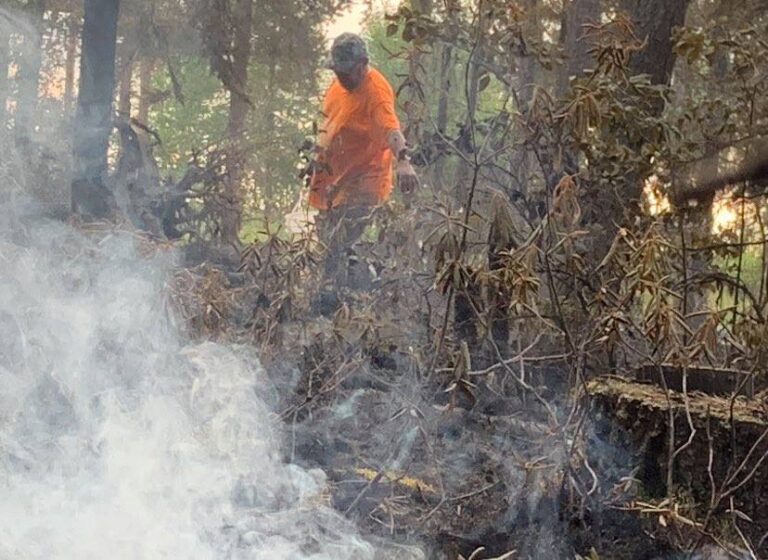
64-year-old Birch Narrows Dene Nation trapper Ron Desjardin and his 61-year-old brother Al spent three days fighting a wildfire that threatened their family’s cabin — only to see their trapline go up in flames as forest fires ripped through their traditional territory in northwest Saskatchewan.
“The fire was within feet of the cabin. We spent three and a half days with buckets and shovels. Waiting for this help that we were told was going to come our way — which didn’t happen,” Ron Desjardin said.
“My brother and I were sitting there on the lake watching this fire — looking at each other — and we came to the realization that when this regrowth of the forest and the animals starts coming (back) in, we’re going to be in our 80s. That hit us pretty hard.”
‘Empathy lacking’
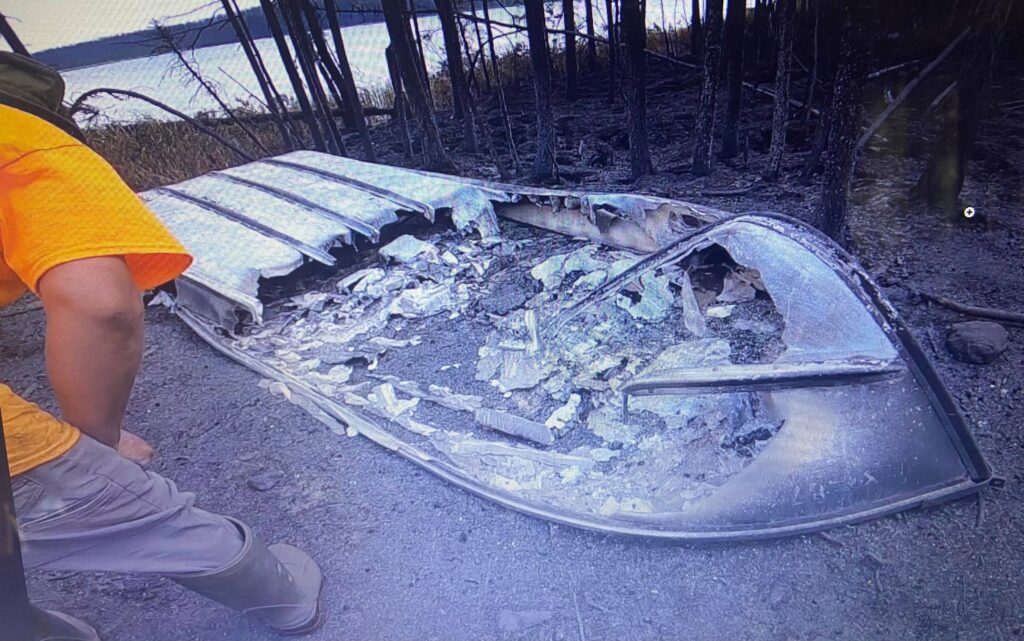
The brothers had to take an airplane to get to their cabin when they heard it was threatened. After three days, with no way to communicate for a lift back, they took a boat down the river to get home.
“It was risky coming down the river — which we had no choice but to do. It took us 16 hours because the river was clogged by trees. Normally in a canoe, it would take us about nine hours to paddle down… We had to cut our way through (debris) from previous forest fires,” Desjardin said.
“Some of the places had, like, seven trees falling right across the river — which we had to cut down. Then coming home to our community we drove through a forest fire. We drove through smoke to get home — but this is what we’re faced with.”
The brothers managed to save their cabin, but they will need to wait for their trapline to regrow as there is nowhere left to build a new one.
“What am I going to do now? Where am I going to go if the whole land is charred and there’s no wildlife? What am I going to teach my grandchildren if these fires keep burning, and burning, and burning?” Desjardin asked.
“This is our traditional area where my grandfather and my father trapped. We don’t have another location we can move to. I would venture that every trapper in the north has a similar story. All over the north traplines are burning, cabins are burning — because they’re not considered as a value asset.
“I think empathy is lacking. There’s no empathy because our way of life is not important to them. Our home is not important to them, our animals are not important to them.”
Saskatchewan Public Safety Agency (SPSA) spokesperson Christopher Clemett said the agency “assesses every wildfire and manages them based on the threat that they pose to public safety”
He said priority goes to communities, major public and industrial infrastructure, commercial timber, structures, commercial or industrial operations and natural resources.
“This ensures response resources are sent to address the largest threats,” Clemett said.
“The health and safety of Saskatchewan residents is our primary concern.”
‘Cleared from the land’
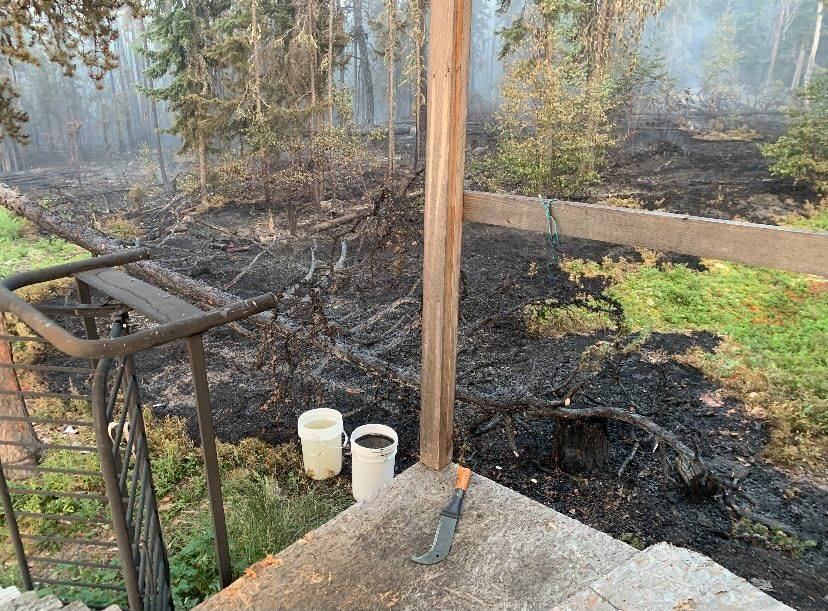
Desjardin said he “can’t help but feel” that Indigenous people are being “cleared from the land,” to which they have rights.
He said resource companies would prefer land-users not be there to get in the way of their interests in the region. Not protecting traplines and cabins as “values” is a form of colonialism, he said.
Desjardin’s daughter Rebecca Sylvestre is a program manager at the Birch Narrows and Turnor Lake Community Food Centre — where she takes children out on the land along with Elders in the community so they can learn to live “from land to plate.”
Sylvestre said she’s a firefighter herself, but was never called on to help stop those fires from burning down important traditional lands.
“Our trap lines are just left to burn. They’re still burning. I don’t see them mobilizing. There’s one (fire) right across the lake that took our annual cultural gathering ground and burned it crisp to nothing. We’ve gathered there ever since 2004 and now it’s gone,” Sylvestre said.
“I don’t think they take culture and tradition as importantly as they should. I don’t think they realize all the work that goes into making a trap line.
“It takes years to make a trap line. You’re cutting roads, you’re cutting trees, you’re going across the rivers. You’re setting yourself up for your future, for your kids. Now how are we going to teach on it? Where do we take our kids and grandchildren?”
Sylvestre launched a petition to protest what is commonly referred to in the north as a “let it burn policy” by the province toward wildfire management in the region. The province says there is no “let it burn policy,” but that wildfires play a natural role in boreal ecosystems.
“They won’t fight fire if it’s not threatening a community. That’s what I understand about it. I know new growth is good. But save something for our children — don’t let it all burn,” Sylvestre said.
“I want them to consider all the work that’s put into our traditional lands and how much we value our traditional lands, and how we live off of our traditional lands. I want them to stop this ‘let it burn’ policy. We don’t have enough land as it is. We need to save what we’ve got for our children and for our future.”
Sylvestre wants the province to change wildfire management policies in the north.
“The destruction caused by the fires means we are losing our cultural lands, losing our livelihoods and losing a way of feeding ourselves,” Sylvestre wrote in her petition.
She contends that “no effort is made” to fight fires further than 20 kilometres from a community.
“This, in addition to the elimination of manned watch towers, means that our traplines, hunting lodges and gathering places are being destroyed as there is not enough time to fight the fires,” Sylvestre wrote.
“Individual community members are then forced into dangerous situations in order to protect what they can — while our communities have trained firefighters waiting for the call from the government.”
‘Let it burn policy’
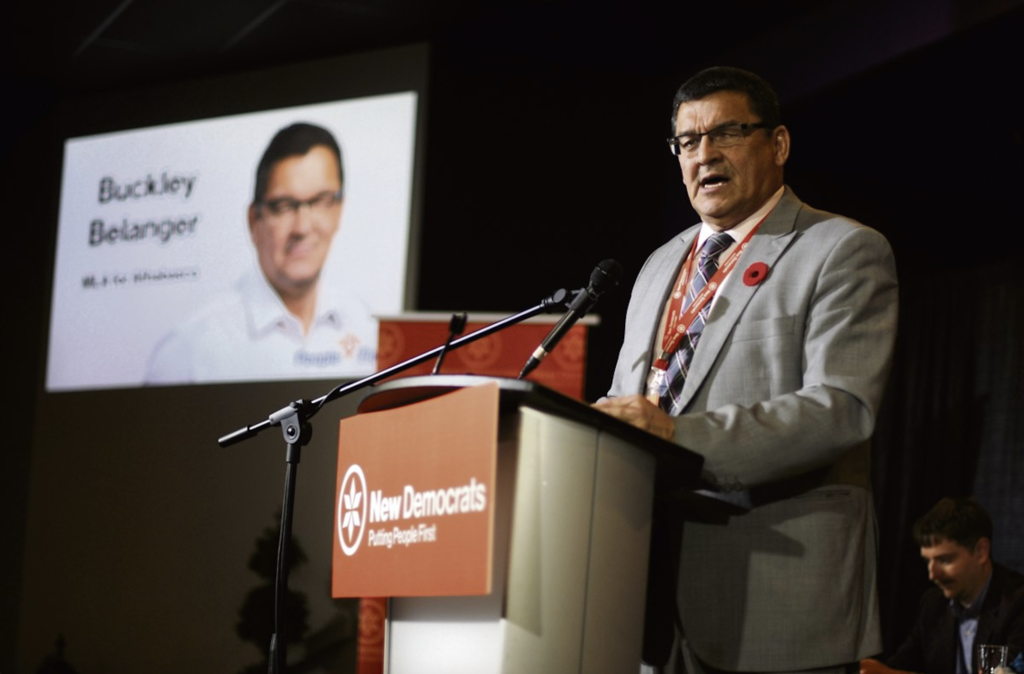
The Saskatchewan government has said a ‘let it burn policy’ no longer exists.
“The policy was removed in 2015 and as a result, there are no zones,” Clemett said
Clemett said that before taking action on any fire the SPSA evaluates its likelihood of success to fight those fires, identifies values at immediate risk or potentially at risk, ensures that it is safe to respond and then responds in a way that “will minimize economic impact.”
“In Saskatchewan’s north, fires play a major role in influencing the health, strength and renewal of forest vegetation,” Clemett said.
“The agency works hard to balance the need for protecting public safety while allowing fire to play its natural role.”
Athabasca MLA Buckley Belanger said although the province denies it — Saskatchewan is “letting the north burn.”
“There’s a lot of frustration in the north right now over the fire situation,” Belanger said.
“From the perspective of wildfire management from the province — we’re seeing evidence that this provincial government is letting more and more fires burn on their own and burn out of control.
“Whatever they tell you, people here are seeing that this government has employed the ‘let it burn’ policy.”
Belanger wants northern communities to be more involved in wildfire management. Resources to fight those fires need to be based locally, he said.
“They need to increase their manpower in northern Saskatchewan. They need to have more trained fire protection workers,” Belanger said.
“The water bomber crews are being run ragged. They’re working hard, but they don’t have enough of those crews out there and they need to have more equipment.”
He said livelihoods are being put at risk by the government’s ‘hands off’ approach to wildfires and that traditional assets also need to be protected.
“My message for (Premier) Scott Moe and company is that everything we have in the north is of significant value; human life, our communities and our traditional way of life,” Belanger said.
“Whether it’s trapping, or fishing, or wild rice, the commercial fishing industry or the commercial forestry operations — those industries are being impacted by wildfires.”
Belanger said climate change will bring more wildfires to the region in years to come. He said the province isn’t taking climate change seriously enough and argues there needs to be a plan to deal with more wildfire activity as global warming starts to kick in.
“With the changing weather patterns — and many people talk about global warming — this is not an issue that caught us the Saskatchewan government unaware or flat footed. This government knew very well that the fire seasons in our north would get more drastic and more threatening,” Belanger said.
“So, don’t let it burn. Help us build capacity at the local level for full engagement. Help us build a stronger fire protection workforce that could respond to these fires quicker and help us build more bases in the north.”
‘Come sit down with us’
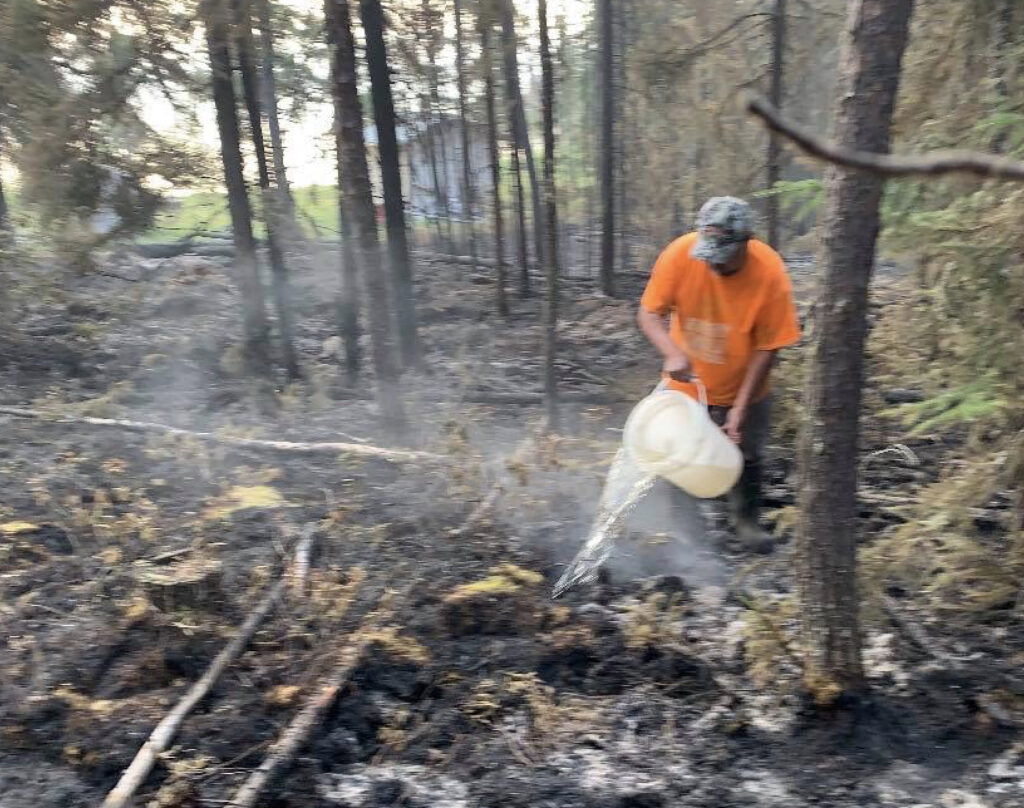
Clemett said the SPSA is “committed to engaging Indigenous leaders, stakeholders and northern communities to support and enhance public safety in the province.”
He said the agency is “proud of the fact that the majority of its firefighters are northern residents — and most are Indigenous”.
“When fires are a threat to local communities, SPSA directly engages with community leaders and makes an effort to hire additional local firefighters to work on these fires,” Clemett said.
“Currently, more than 200 local firefighters have been hired in addition to the 200 SPSA firefighters and the 400 northern community and First Nation firefighters.”
The province said it does take climate change into account in its approach to wildfire management.
“Climate change has been considered,” Clemett said. “The prioritizing of wildfire threats, and therefore resources, is key to managing them under the effects of climate change.”
“Especially during times of wildfire activity,” Clemett said the SPSA “remains in constant contact with impacted communities to ensure concerns are heard and to find ways to work closer with communities to address the threat.”
Clemett said the agency takes “significant steps” to reduce the risk of wildfire to many communities through forest thinning, fire guard construction and vegetation maintenance in high-risk areas.
Once treated he said these areas burn with “much lower intensity,” which he said “increases the safety and effectiveness of ground and aerial wildfire suppression” and reduces the “direct impacts” of wildfires.
Desjardin said that in the past communities were actively involved in making on-the-ground decisions.
Watch towers would alert communities to threats and residents would look forward to yearly employment fighting the fires. But those days are gone, Desjardin said.
He doesn’t want to assign blame to one political party or the other — but he implored the province to meet with Indigenous land-users and find a way forward.
“The whole idea of reconciliation is a process of sitting down, having a dialogue and communicating. That’s what this is all about,” Desjardin said.
“Please come and sit down with us. Let’s see if we can resolve this. Let’s look at fire management. Quit ignoring us — because this is important to us. Let’s hammer this out.”
